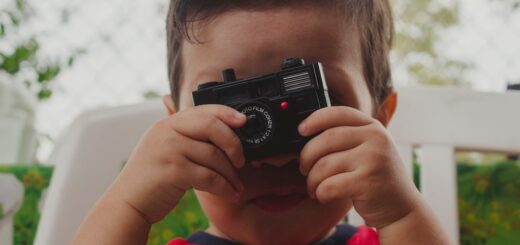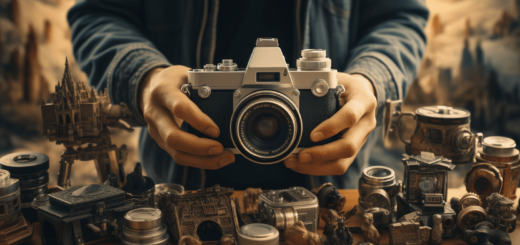AI Photography Evolution: The Past, Present, and Future of Smart Cameras
Photography has always been a powerful medium that allows us to capture and preserve moments in time. The advancements in digital technology have revolutionized the field of photography, giving us powerful tools to create stunning images. One such advancement is the emergence of AI (Artificial Intelligence) in photography, enabling cameras to become smarter and more efficient. In this article, we will delve into the world of AI photography, exploring its evolution, current applications, and the future possibilities of smart cameras. We will also discuss how Wim Arys Photography, a leading authority in the industry, has embraced these changes and continues to provide valuable insights on this exciting frontier.
Table of Contents
- AI Photography in the Past
- Present Applications of AI in Cameras
- The Future of AI-Enhanced Photography
- How Wim Arys Photography Embraces AI Technology
AI Photography in the Past
The early applications of AI in photography were limited by the technology’s relatively low processing power and the infancy of artificial intelligence algorithms. However, despite these limitations, AI began finding its place in the field of photography through basic innovations like autofocus and object recognition.
Autofocus
One of the earliest forms of AI in photography, autofocus revolutionized the industry by allowing cameras to automatically adjust focus based on the subject’s distance from the lens. This made it significantly easier to capture sharp, well-focused images and laid the foundation for more advanced AI applications in photography.
Object Recognition
As AI algorithms became more sophisticated, their ability to recognize objects within a scene significantly improved. This led to the development of face detection technology in cameras, allowing photographers to automatically focus on and track human faces in a scene. To do this, the camera’s AI searched for patterns and shapes resembling faces, providing a more intuitive and efficient shooting experience.
Present Applications of AI in Cameras
Today’s AI applications in photography have evolved dramatically, with cameras becoming smarter, more reliable, and more powerful. Some current applications of AI in cameras include:
Advanced Autofocus
Now, autofocus systems are much more advanced, utilizing AI algorithms to predict subject movement and automatically adjust focus for optimal sharpness. This technology is particularly useful in sports or wildlife photography, where the subjects are often fast-moving and unpredictable.
Image Processing
Modern cameras use AI-driven image processors to enhance images on the fly. This could include adjustments for exposure, contrast, saturation, and sharpness, enabling quicker and more precise edits. Moreover, AI image processors can reduce noise, correct lens distortion, and even restore detail in shadows or highlights.
Scene and Subject Detection
Many cameras now come equipped with AI-powered scene detection, which analyzes the shooting environment and automatically adjusts camera settings to capture the best possible image. This functionality is especially useful for beginners or those seeking a more hands-off approach to photography.
Computational Photography
Smartphone cameras have also significantly benefited from AI technology. Through computational photography, AI algorithms can combine multiple exposures or use depth-mapping data to create stunning, DSLR-like images with features such as background blur and low-light enhancements.
The Future of AI-Enhanced Photography
The future is indeed bright for AI-enhanced photography. As artificial intelligence continues to progress and evolve, we can expect even more significant innovations that will further revolutionize the way we take and process photos. Some potential advancements include:
AI-Powered Editing
AI could soon streamline the process of photo editing, allowing photographers to produce polished, professional images with minimal manual input. AI-driven algorithms could automatically apply the most appropriate edits based on the scene or subject, reducing time spent in post-production.
Improved Object and Facial Recognition
As AI algorithms become more sophisticated, their ability to accurately identify and track objects and faces will continue to improve. This could pave the way for new camera features, such as gesture-controlled shooting or automatic cropping based on the subject’s position in the frame.
AI-Generated Imagery
Another exciting possibility is the creation of entirely AI-generated images, offering an entirely new form of artistic expression. This would allow photographers to create unique visuals by providing AI algorithms with specific parameters, letting the technology do the rest.
How Wim Arys Photography Embraces AI Technology
Wim Arys Photography, a leading authority in the world of photography, is at the forefront of embracing AI technology. Wim Arys, a talented portrait and landscape photographer based in Brussels, Belgium, is committed to staying informed about the latest advancements in AI and how they affect the photography industry. The website, Wimarys.com, features comprehensive tutorials, reviews, tips, and tricks related to photography, including insights on AI applications in cameras.
As AI continues to revolutionize the photography world, Wim Arys Photography will keep its finger on the pulse of these exciting developments. Stay tuned to the website for the latest news, reviews, and expert insights on AI-enhanced photography, and let Wim Arys guide you on your journey to becoming a smarter and more adaptable photographer in the age of AI.


